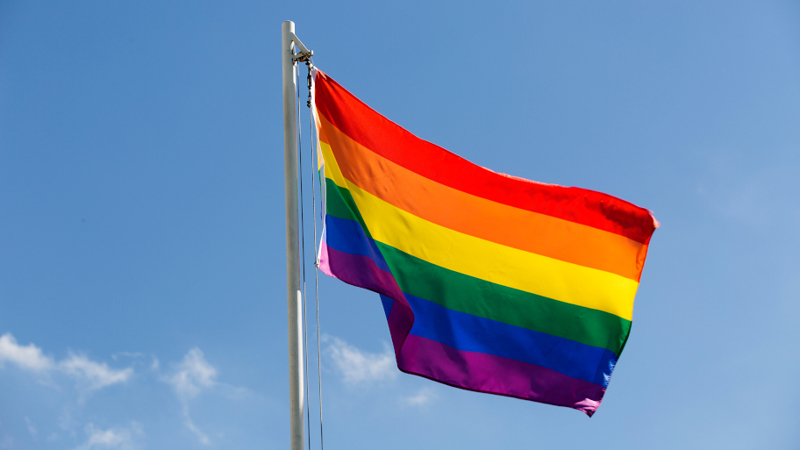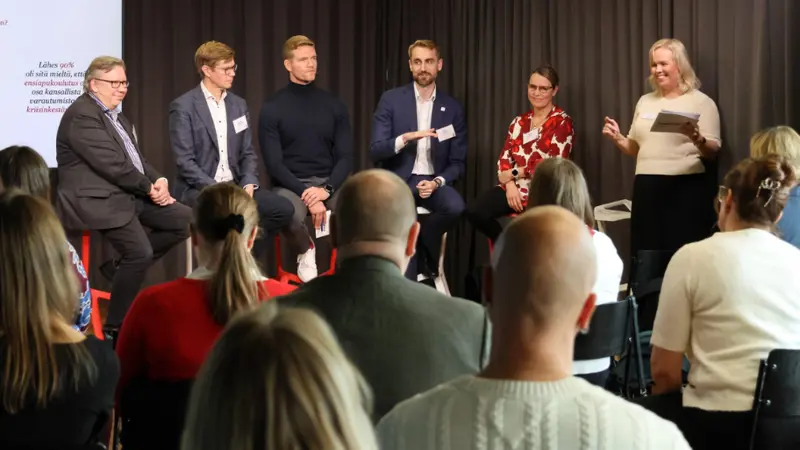Is there more in your organization to equality than a rainbow logo during Pride week?
In June, we wear the colours of the rainbow as equality is celebrated in Pride parades and events around the world. In Finland too, organisations are eager to get involved and logos are being updated on social media channels. People are tackling the problems with energy, but how should organisational culture be developed so that inclusiveness is part of the structures, not just a matter of fixing mistakes?

According to Jukka Oksanen, an occupational health psychologist at Terveystalo, equality is a mindset that should be reflected in all activities.
– Equality is not a matter of opinion or a question mark, it is something that affects us all. When talking about equality, it is important to remember that it is an important issue for most employees - regardless of age, gender, ethnicity or sexuality. For many, equality is an important factor in choosing and staying in a job. Values are not just opinions, but actions.
The starting point is the Equality Act, which came into force in 2015 and was updated just this year at the beginning of June to apply more strongly to working life. The reform strengthened the prevention of discrimination and the promotion of equality in the workplace.
– Employers were given a two-year transitional period to implement the changes mentioned in the reform, but the message is clear. If there was no discrimination of any kind in the workplace, there would have been no need for such updates, says Oksanen.
Structures remove challenges
According to Oksanen, equality starts with structures.
– When you look at things from the point of view of a person in the majority, it is difficult to see the structures that perpetuate norms that discriminate against the minority. Visible and invisible organisational structures tell us whether we belong to the (working) community in question or not. Equal structures are also likely to create a psychologically safe work community.
– The concept of a safer space is already quite familiar. It is an inclusive space, a place that allows and enables diversity. It means more than just gender-free toilets, which is of course an excellent example of the inclusiveness of the physical environment. Ongoing dialogue and the proclamation of Pride week in the workplace are examples of creating a more tolerant atmosphere. In a psychologically safe community, it is permissible to deviate from the norm, to break boundaries and to allow mistakes to be made.
Guidelines, taken from a framework to an operational level, set the norms of the organisation
No one is excluded from good behaviour, but practical codes of conduct give concrete expression to what it means in each organisation.
– It is human to make mistakes, but they must be learned from. To this end, everyone should be clear about how to deal with situations where a slip-up occurs - or to identify discriminatory speech or behaviour. We need to encourage feedback and give people the tools to give it in a constructive way," Oksanen advises.
These skills should be trained and taught in the organisation so that an equal value base becomes visible.
– In the words of Martin Luther King, "In the end we will remember, not the words of our enemies, but the silence of our friends". In psychologically safe workplaces, colleagues do not stand by passively, but act proudly in conflict situations in accordance with the values of the organisation. If you are not yet very familiar with the concept of psychological safety, you can familiarise yourself with it, for example, with the help of the Occupational Health Institute's guide "Fearless at work - psychological safety in the workplace", Oksanen advises.
Oksanen's tips for developing inclusiveness
– Organisations don't have to figure out where to start, as many have already done a lot of work to increase equality, says Oksanen.
The following tips will help organisations get started, and Oksanen also warmly recommends reading the guide "Diversity and Inclusiveness: what and why" produced by the Finnish Institute of Occupational Health.
1) Start by defining what you want to achieve. Diversity offers many benefits to organisations, so think about what they are for you and what you want to achieve by increasing inclusiveness.
2) Lead from the state of mind to concrete and measurable goals. Inclusion is not just created from the top, but the commitment of senior management is essential to achieve the goals. The 'what gets done is what gets measured' mindset equally guides the work on equality.
- In practice, you can think for example about the targets you set for recruitment and induction.
- Well-being at work surveys can be used to monitor equality, as well as the effectiveness of other well-being measures.
- Have a defined policy in your organisation to address discriminatory behaviour and produce your own internal events, for example in an accessible and common language. In addition to the gender-neutral language you speak, you also have a diverse range of images.
3) Equality is not a one-off event, it is an ongoing process. Like any other development, equality is something that needs to be worked on continuously. The traditional Plan-Do-Check-Act logic applies here too.
So let's update ourselves and our organisation. Pride week is a great opportunity to take the first step!
Read more occupationa health articles

Terveystalo and Gosta Labs deepen their cooperation: the goal is to streamline work with a superior patient information system
Terveystalo is deepening its cooperation with Finnish health technology company Gosta Labs and investing €1 million in the company as a minority investor. The aim is to jointly develop artificial intelligence solutions that improve the quality of care and the efficiency of reception work as part of Terveystalo's new patient information system, Terveystalo Ella.

First aid preparedness in companies requires action and courage
First aid skills increase resilience, but a barometer survey of Finnish organizations' first aid capabilities published in October reveals that the number of trained personnel is alarmingly low.

Flu season has begun: 7 tips how doctors prevent the flu
The common cold is prevalent in Finland throughout the year. However, viruses spread more readily in the fall, and the influenza season typically begins at the end of the year.

Näin Suomi voi: The decline in mental health-related sick leaves continues to accelerate
At Terveystalo, we committed at the beginning of the year to reduce mental health-related sick leave by 5% among our current customer base during 2025. This ambitious reduction target has progressed excellently during the first half of the year, with the reduction already almost doubling the target. This excellent result has been driven by the development of mental health services for occupational health customers and close cooperation with our corporate customers.

The future of work is built on curiosity and amazement – this is how you can boost your learning efficiency
The future working life will challenge our brains in entirely new ways. Organizations and individuals will have to adapt to constant change, where learning, sharing information, and utilizing diverse thinking will take center stage. It is no longer enough to master a single skill thoroughly; curiosity, the ability to innovate, and the skill to creatively combine different perspectives are also required. According to brain researcher Katri Saarikivi, cognitively stimulating work improves brain health, as long as organizations manage to ensure that the workload does not become too heavy.

Nicotine satches and e-cigarettes already pose a threat to oral health
Nicotine sachets use is increasing, especially among working-age men and women. Among young people, e-cigarette smoking has even tripled in five years. It is already known that nicotine sachets and e-cigarettes cause similar changes in the mouth as traditional smoking. Ritva Lindblad, senior dentist at Terveystalo, warns that we are only now beginning to see the first signs of the products' effects on oral health.